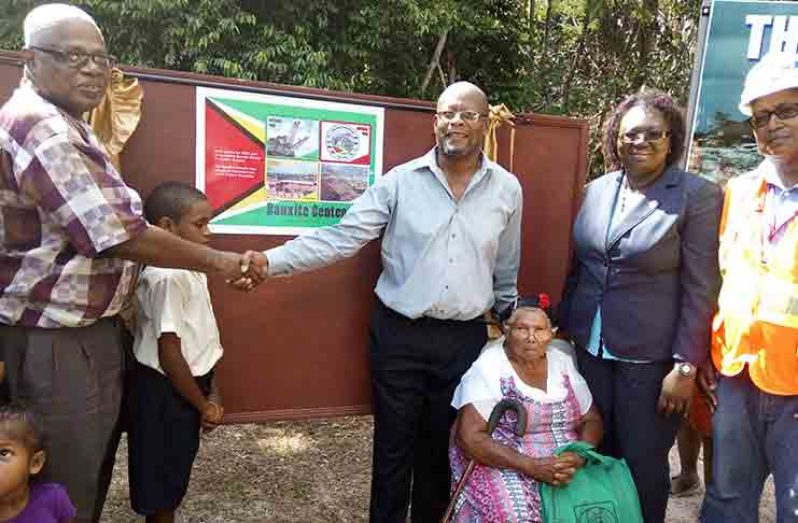Four new commemorative postage stamps have been launched to mark 100 years since the start of bauxite operations here.
The stamps were launched Thursday last at Three Friends Mine in Region 10 – the first bauxite mine in Guyana.

The stamps were unveiled by Advisor to the Minister of Public Telecommunications Enrico Woolford and Chairman of the Centennial Committee Horace James.
The stamps were produced as a result of a collaboration between the Guyana Post Office Corporation (GPOC), the Bauxite Centennial Committee and the bauxite company Rusal.
Present at the well attended ceremony were Post Master General Karen Brown, members of the centennial committee, General Manager of Bosai Minerals Group Guyana Robert Shan and other members of staff, Deputy Mayor of Linden Waneka Arindell, Members of National Trust Guyana, old bauxite employees and scores of students.
The stamps will be available for circulation in $80, $140, $150 and $180 denominations at Post Offices countrywide.
They will serve as a memorabilia for the evolution of bauxite mining and how it has impacted the lives of Guyanese.
General Post Master Karen Brown said the stamps provide a historical prospective into the bauxite industry’s 100 years of existence.
“The stamps we unveil today have the fortitude to last way beyond the 200 years of the bauxite industry and I would like to challenge us to safely archive these stamps for prosperity since each may worth millions 100 years from now,” Brown said.
Mr Woolford said stamps play an important role in informing us of our past.
“Stamps have been that important reminder of how we have carried correspondences and content over the years, how we have ‘stamped’ our authority to allow that free movement of information and communication.”
Given technology, Woolford said that the Ministry of Public Telecommunications will play an integral role in the transformation of the Post Offices becoming ICT hubs where Guyanese can not only access public WIFI but use efficient and effective government service though its e-government platform.
“It’s a way to modernize Government services to the people, improve their lives and also the Gross Domestic Product (GDP) of this country.”
The Three Friends Mine has become a historical site where the first bauxite was dug from the crust of the earth in 1916.
Three Friend Mine was named after three friends who journeyed from Canada after they were told by Mr. John Bain Mackenzie of the rich mineral that was discovered in the soil.
Located on the site was the first bridge that was built to transport bauxite across the Demerara River where it was taken to Mackenzie to be packaged for export.
In 1920, a 90-mile rail road was built from Three Friends to Mackenzie and the bauxite was transported by steam locomotives.
The first company to commence bauxite mining was Demba (Demerara Bauxite Company) which was an offshoot of the Canadian Aluminum Company Alcan. Others who followed were Guymine, Linmine, Linpa, Omai and presently Bosai.
The bauxite company was nationalized in 1971 and after operating at a loss, the then government was on the verge of closing operations as the consolidated fund was forced to fetch the financial burden of the company with US$15 M per year.
The high competition in the alumina market was deemed responsible for this. Many private companies showed interest in the company but the one who was willing to invest in the ailing company was Chinese company Bosai Incorporated, which commenced operations in 2007 and is still in operation.
This unveiling ceremony was just one of the many other activities that were held during this week to commemorate 100 years of bauxite mining.
A Centennial arch that is currently under construction will be launched on the 22nd November. A bauxite centennial magazine will also be published and the establishment of a centennial park and industrial museum has already commenced.



.jpg)








